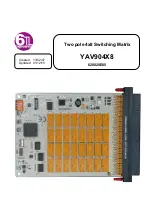
VTP Characteristics
VLAN Membership Characteristics
Membership Mode
VTP is required.
Configure the VMPS and the client
with the same VTP domain name.
To participate in VTP, at least one
trunk port on the switch or a switch
stack must be connected to a trunk
port of a second switch or switch
stack.
A dynamic-access port can belong
to one VLAN (VLAN ID 1 to
4094) and is dynamically assigned
by a VLAN Member Policy Server
(VMPS).
You can have dynamic-access ports
and trunk ports on the same switch,
but you must connect the
dynamic-access port to an end
station or hub and not to another
switch.
Dynamic access
Dynamic-access ports and
VMPS is not supported on
the switch.
Note
VTP is not required; it has no effect
on a voice VLAN.
A voice VLAN port is an access
port attached to a Cisco IP Phone,
configured to use one VLAN for
voice traffic and another VLAN for
data traffic from a device attached
to the phone.
Voice VLAN
VLAN Configuration Files
Configurations for VLAN IDs 1 to 1005 are written to the vlan.dat file (VLAN database), and you can display
them by entering the
show vlan
privileged EXEC command. The vlan.dat file is stored in flash memory. If
the VTP mode is transparent, they are also saved in the switch running configuration file.
In a switch stack, the whole stack uses the same vlan.dat file and running configuration. On some switches,
the vlan.dat file is stored in flash memory on the active switch.
You use the interface configuration mode to define the port membership mode and to add and remove ports
from VLANs. The results of these commands are written to the running-configuration file, and you can display
the file by entering the
show running-config
privileged EXEC command.
When you save VLAN and VTP information (including extended-range VLAN configuration information)
in the startup configuration file and reboot the switch, the switch configuration is selected as follows:
•
If the VTP mode is transparent in the startup configuration, and the VLAN database and the VTP domain
name from the VLAN database matches that in the startup configuration file, the VLAN database is
ignored (cleared), and the VTP and VLAN configurations in the startup configuration file are used. The
VLAN database revision number remains unchanged in the VLAN database.
•
If the VTP mode or domain name in the startup configuration does not match the VLAN database, the
domain name and VTP mode and configuration for the VLAN IDs 1 to 1005 use the VLAN database
information.
•
In VTP versions 1 and 2, if VTP mode is server, the domain name and VLAN configuration for VLAN
IDs 1 to 1005 use the VLAN database information. VTP version 3 also supports VLANs 1006 to 4094.
Consolidated Platform Configuration Guide, Cisco IOS XE Release 3SE (Catalyst 3850 Switches)
6
OL-29322-01
Configuring VLANs
VLAN Configuration Files







































